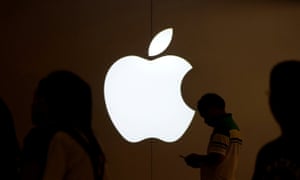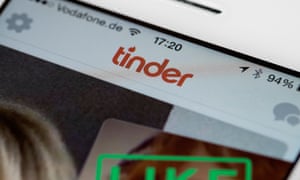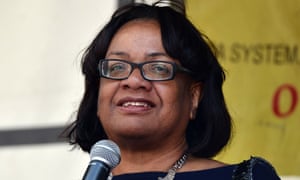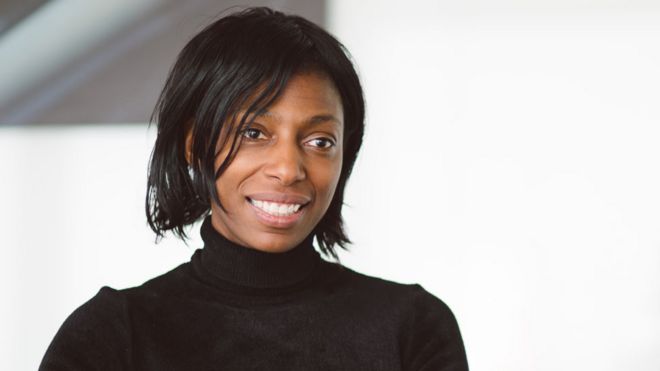Statistics:
- 69% of adults use TV as a platform to watch news
- 19% have used only Tv for news
- Half of the 16-24s demographic say they use
TV for news compared to nine in ten of those aged 65+
- 65+ are also more
likely to be using newspapers and radio for news than those aged 16-24, while the
younger age group are more likely to use the internet (63% for 16-34s vs. 18% for 65+). This would be due to the age difference and what each demographic have grown with or saw start growing.
- Only 6% of say to have use all four platforms of TV, radio, newspapers
and the internet.
- Those aged 65+ are more likely than those aged 16-24 to use TV, newspapers and radio for news consumption, while the opposite is true for the internet/ apps.
- Newspapers are used by 29% of people, not a significant decrease in 2015 where just 31% of people used newspapers to access news, which represents a decrease of nine percentage points since 2014 and 2013
- Three in ten (31%) respondents use only one platform for news
- in the internet and newspapers C2DEs are seen to consume more than those of ABC1s: TV (69% vs 69%), the internet (61% vs. 36%), newspapers (31% vs. 36%) and radio (38% vs. 29%).
- 33% of people have said to have gotten their news from the radio and this percentage has stays quite stationary throughout the figure.
- 77% say they use any BBC radio station for news, 26% use each of
BBC Radio 4 and BBC Radio 2, while 16% say they use BBC Radio 1 and 10% use
Heart.
- The Sun and the Daily Mail are the most-read UK-wide
newspapers.
- National daily titles
have decreased from 9.2 million in 2010 to 6 million in 2016
- The most-used titles for news are: Daily Mail (26%), The Sun (22%), the Daily
Mirror (11%), followed by 9% using each of the Metro, The Times and The Guardian.
- In 2015 41% said to have used the internet for news but this has nceased in 2106 as it has raised to 48%
- 47% of those who use social media for news say they mostly get news stories
through social media posts, compared to 30% in 2015.
- Nearly six in ten (58%) of radio news users only use one radio source for news; 40% of
TV news users only use one source; 38% of internet users only use one source and
31% of newspaper news users use only newspapers for news.
2) What are the most popular platforms for audiences to access news and how has this changed in recent years?
Television is the most-used platform for news, with 69% of UK adults saying they use TV as a source of news.
However this is continuing to decrease since 2014 when 75% of adults used their TV's to watch news. This is shows a decrease from 2013 when 78% of people were using Television to access news, this is most likely due to the use of apps and the internet to access the news.
The number of people who use the internet or apps for news has remained the same since 2014, with just over four in ten (41%) doing so, compared to just under a third in 2013 (32%). In 2016 has shown an increase of this data as 78% of people access the news through the internet on any device more, showing a 16% difference from 2013 to 2016 usage of news accessed on devices.
Those aged 65+ are also more
likely to be using newspapers and radio for news than those aged 16-24.
Newspapers are used by 29% of people, not a significant decrease in 2015 where just 31% of people used newspapers to access news, which represents a decrease of nine percentage points since 2014 and 2013 (when 40% of UK adults said they used newspapers for news).
3) How do different age demographics access news in the UK?
Those aged 65+ are more likely than those aged 16-24 to use TV, newspapers and radio for news consumption, while the opposite is true for the internet/ apps.
49% of people aged 16-24 use TV for news, compared to 89% of those aged 65+. Men are more likely than women to use any of the four main platforms for news (TV, internet, newspapers and radio).
71% of men use TV for news, compared to 68% of women. The same is true for the internet (49% vs. 47%), newspapers (30% vs. 28%) and radio (33% vs. 33%).
6) Does socio-economic status change attitudes to news? If so, how?
Socio-economic status does change attitudes to the news, People in the ABC1 socio-economic group are 'more likely' than those in the C2DE socio-economic group to consume news on any of the four main platforms, however, in certain cases like in the internet and newspapers C2DEs are seen to consume more than those of ABC1s: TV (69% vs 69%), the internet (61% vs. 36%), newspapers (31% vs. 36%) and radio (38% vs. 29%).
7) How many different sources of news are used on average? How does differ between different groups?
Of the four main platforms, three in ten (31%) respondents use only one platform for news, with just under two in ten (19%) using only the TV alone, 11% using only the internet, 3% using radio alone, and 2% using only newspapers. The use of TV alone is more pronounced among over-55s (26%) and those in the DE socio-economic group (28%) than among 16-24s (13%) and those in the AB socio-economic group (14%). One in five (20%) people aged 16-24 report that they only use the internet for news, compared to just 2% of those aged 55+.
8) How has news consumption through television changed in recent years?
BARB figures show that each adult watched 110 hours of national and international news on television in 2016. There hasn't been any change of an increase in hours of the consumption of television as it has stayed stationary of 110 hours in both 2015 and 2016. However, there is a slight increase of three hours since 2014 (when the average number of hours was 108) and a large decrease of 12 hours since 2011 (when the average was 121 hours), this maybe due to the increase of access of news through the internet.
People aged 16-24 each watched just 23 hours of news on television in 2016, compared to large amount of hours spent on news consumption in news in people aged 65+ spending 215 hours,a difference of 192 hours compared to the younger demographic. Although the BBC channels account for the majority of news viewing for 65+, this group is more likely than younger viewers to not consume news on ITV ( 11.9% vs. 17.8%
for those aged 16-24). Total hours of viewing of news among 16-24 year olds has decreased each year(by ten hours since 2010).
In the same period, viewing hours have fluctuated for over-65s, with an overall decrease of five hours between 2010 and 2014, while a the slightest decrease on e hour in 2015 and 2016.
9) How much has newspaper circulation declined since 2010?
News consumption through newspapers has declined by more than 27 percentage points since 2010. Due to the increase
10) Which are the most popular newspapers and websites in the UK? What do you know about those newspapers' political viewpoints?
The Daily Mail is the most widely-read news title in the UK, with around 5.5 million users. The Sun follows with 5.2 million users, compared to 5.8 million. Looking at readership levels of print-only newspapers, The Sun was the most popular (with just under 5.2 million users vs. 3.5 million for the Daily Mail). The most used titles were: The Sun (22%), the Daily Mail (26%), the Daily Mirror (11%), the Metro (9%) and The Times (9%).The political viewpoints of all these newspapers are mostly left wing.
10) How does online news consumption differ for age, gender and socio-economic status?
Four in ten (41%) UK adults say they use the internet for news. Six in ten (59%) UK adults aged 16-24 say they use the internet or apps for news, compared to just under a quarter (23%) of those aged 55+
Over half (53%) of those in the ABC1 socio-economic group use online sources for news, compared to a third (32%) of those in the C2DE socio-economic group.
Men are more likely than women to say they use internet for news (45% vs. 37%).
11) What percentage of people use social media to access news? How does this differ by age and socio-economic status?
In terms of age, consumption of news online through any device is considerably higher for those aged 16-24 (48%) than for over-65s (18%). In terms of gender, men are most likely to consume news online, (49% vs. 47%), and in terms of socio-economic status people in the AB socio-economic group are more likely than those in the DE socio-economic group to consume news online (61% vs. 29%)
12) What percentage of users only use social media sites for their news?
26% of people above 16+ use social media sites for the news, while 26% of people above 16+ get their news from websites and new sites, which leaves 25% getting news equally from both and 2% not knowing. I think this particularly says a lot about the problem of people being able to altercate stories, if not from a reliable source then many stories may be false. The anonymous of the internet is a problem of allowing people to speard their ideologies whether good or bad onto the internet.
13) What are the most popular online sites for news?
Over half (56%) of online news users said they used the BBC website or app. Facebook was the second most popular response, up by 27%. This was followed by the Sky News website or app (15%) and the Google search engine (15%).
14) What percentage of 16-24 year olds access news mostly from social media?
About 40% of people aged 16-24 access news on social media which is a drastic change from the age of 65+ year olds which come at 3%. I think this would be due to older people growing up where they consumed news through newspaper, news etc. and so with this new digital media growing ahead of more traditional media, it can be hard to adapt to it.
15) How do audiences find stories online? Do you follow links or go to the homepage of the news provider?
According to the research most audiences use an app to go direct to the home page of a news provider. 74% of those who used social media for news said they accessed their news stories through social media posts, compared to 85% who said they accessed them directly from the websites/apps of news organisations. A further 25% said they accessed them equally on social media posts and on news organisations’ websites or apps.
New/digital media: audience and institution
16) What are the benefits for audiences from the changes new and digital media have had on the news industry?
Now that there is new and digital media for audiences to get updated on the News, would help them with key updates since they would have notifications to keep them ready for new stories. As well as that social media can be translated so therefore people can understand stories so that they could understand different viewpoints.
The audience can now access news more easily as it is everywhere, from mobiles to tablets and also 24 hours on TV. Also, apps such as Facebook allow tailor-made news to be readily available for audiences, so each user can access the sort of news they prefer to read.
17) What are the benefits for institutions from the changes new and digital media have had on the news industry?
Large-scale news institutions do have some benefits from the changes of new and digital media. The introduction of the internet can allow news institutions to widen the platforms they are on, making their news more accessible thus giving them the capability to reach a large-scale audiences.Thus, they have more platforms to distribute their products which can be linked to provide a multimedia product line. Majority of apps used today have some sought of news available such as Facebook or Snapchat, this is due to the convergence that is taking place on mobile devices and apps, this gives the news industry a better opportunity to get their news to everyone. There are now new ways found to communicate with their audience. There has been more citizen journalism stories more recently in comparison to the past which could show a witness perspective of the story.
18) What are the downsides for audiences as a result of new and digital media in news?
Some of the downsides for audiences as a result of new and digital media in the news is the lack of censorship and gatekeepers for news online, as the news may be false or biased which is a reason to stick to traditional media institutions. Institutions, due to new and digital media, will face loosing out on money and trying to find different way to make profits. So, for audiences, some of this content that may appear to be free won’t be for much longer, content is costly. Audiences may have to pay for news such as The Sun which has a paywall for their online site, which is another reason to stick to newspapers or TV as its cheaper.
19) What are the downsides for institutions as a result of new and digital media in news?
20) Who has benefited most from the changes new and digital media have had on the news industry - audiences or institutions?
I personally believe that audiences have benefited from the changes in new and digital media and the news industry. Due to changes in new and digital media, audiences are not only able to just view the latest news, but they're able to form an opinion on certain topics and put these views out for other people to see.
The fact that news can also be now tailor-suited is a positive for the audience. Additionally, this allows people from around the world to debate and argue back their viewpoints. Furthermore, if there were no audiences that took granted of these new changes, institutions wouldn't benefit at all.it does mean losses in terms of revenue.
However, this does not initially mean Institutions do not benefit.Institutions have benefited from the changes of new and digital media, as they can gather content from recorded footage that can present the story in a new perspective. As well as that institutions can also interact with its audience as it would help them create content for their audience. As well as that they can also share their content making it more easier for the audience to view their reports easier.
Overall, these changes in new and digital media have just made it easier/more efficient for audiences to access news and be constantly updated with what's going on. Therefore, I believe that even though institutions have benefited from these changes, audiences have benefited more so, as these changes have made staying updated with the news more efficient and quick as they are no longer waiting for newspapers to come out, or they don't need to pay for anything as everything is online and free.








